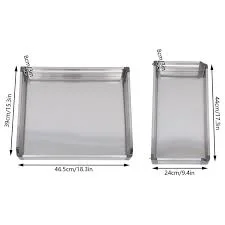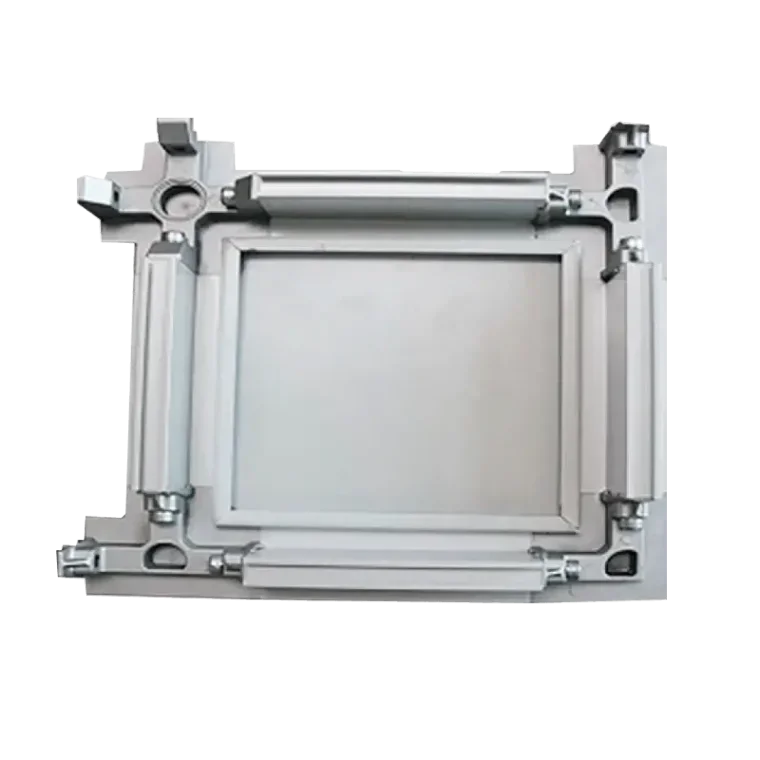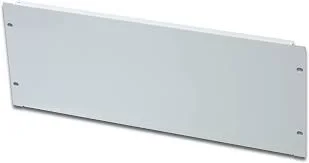Structural reinforcement is a critical aspect of construction projects, ensuring the safety and longevity of buildings and infrastructure. When it comes to reinforcing structures, steel blind plates have emerged as a perfect solution. In this blog post, we will explore the reasons why steel blind plates are an ideal choice for structural reinforcement, highlighting their benefits and applications.
I. Understanding Steel Blind Plates
Steel blind plates, also known as steel cover plates or steel closure plates, are flat metal plates used to reinforce structural elements. They are typically made of high-quality steel, such as carbon steel or stainless steel, which offers exceptional strength and durability. These plates are designed to cover and reinforce openings or gaps in structural members, providing additional support and load distribution.

II. Benefits of Steel Blind Plates
A. Strength and Durability:
Steel blind plates are renowned for their strength and durability. The use of high-quality steel ensures that these plates can withstand heavy loads and resist deformation, making them ideal for reinforcing structures that experience significant stress or pressure.
B. Load Distribution and Stress Reduction:
One of the key advantages of steel blind plates is their ability to distribute loads and reduce stress concentrations. By covering openings or gaps in structural members, these plates help evenly distribute the applied loads, preventing localized stress points and potential structural failures.
C. Corrosion Resistance:
Steel blind plates are often exposed to harsh environmental conditions, including moisture, chemicals, and temperature variations. Fortunately, steel is inherently corrosion-resistant, especially when coated or galvanized. This corrosion resistance ensures the longevity and reliability of steel blind plates, even in challenging environments.
D. Versatility in Applications:
Steel blind plates find applications in various industries and construction projects. They can be used in bridge construction and rehabilitation to reinforce bridge decks and support structures. In industrial settings, these plates are employed to strengthen machinery and equipment. Additionally, steel blind plates are commonly used in building renovations and retrofits to reinforce walls, floors, and other structural elements.
III. Applications of Steel Blind Plates
A. Bridge Construction and Rehabilitation:
Steel blind plates play a crucial role in bridge construction and rehabilitation projects. They are used to reinforce bridge decks, support beams, and other critical components. By covering gaps and openings, these plates enhance the structural integrity of the bridge, ensuring its safe operation and longevity.
B. Industrial Structures and Equipment:
In industrial settings, machinery and equipment often experience significant stress and vibrations. Steel blind plates are employed to reinforce these structures, reducing the risk of fatigue failure and enhancing their overall performance. Whether it's reinforcing crane girders or strengthening conveyor systems, steel blind plates provide the necessary support and stability.
C. Building Renovations and Retrofits:
During building renovations or retrofits, structural elements may require reinforcement to meet updated safety standards or accommodate new loads. Steel blind plates are an excellent choice for reinforcing walls, floors, and other structural components. They can be easily installed and provide the necessary strength and stability to ensure the structural integrity of the building.

IV. Installation and Design Considerations
To ensure the optimal performance of steel blind plates, proper installation and design considerations are essential. Here are a few key factors to keep in mind:
A. Proper Sizing and Placement:
Steel blind plates should be accurately sized and placed to cover the openings or gaps in the structural members effectively. Engineering calculations and structural analysis can help determine the appropriate plate dimensions and placement locations.
B. Attachment Methods and Techniques:
Steel blind plates can be attached to the structural members using various methods, such as welding, bolting, or adhesive bonding. The choice of attachment method depends on factors such as load requirements, accessibility, and project specifications.
C. Structural Analysis and Engineering:
Before installing steel blind plates, it is crucial to conduct a thorough structural analysis to assess the load-bearing capacity and stress distribution of the reinforced structure. Consulting with structural engineers and following industry standards and guidelines is essential to ensure the structural integrity and safety of the project.
V. Case Studies: Success Stories with Steel Blind Plates
To illustrate the effectiveness of steel blind plates in structural reinforcement, let's explore a few real-life examples:
A. Example 1: Strengthening a Bridge Deck:
In a bridge rehabilitation project, steel blind plates were used to reinforce the bridge deck, which had developed cracks and exhibited signs of fatigue. By covering the cracks and distributing the loads, the steel blind plates restored the structural integrity of the bridge, extending its service life.
B. Example 2: Reinforcing Industrial Machinery:
A manufacturing facility faced challenges with a vibrating conveyor system that caused excessive stress on the supporting structure. Steel blind plates were strategically installed to reinforce the weak points, reducing vibrations and preventing structural failures.
C. Example 3: Retrofitting a Historical Building:
During the renovation of a historical building, steel blind plates were utilized to reinforce the aging walls and floors. The plates were carefully designed and installed to blend seamlessly with the building's aesthetics while providing the necessary structural support.

Conclusion
Steel blind plates have proven to be a perfect solution for structural reinforcement due to their exceptional strength, durability, and versatility. Their ability to distribute loads and reduce stress makes them an ideal choice for various applications, including bridge construction, industrial structures, and building renovations. Proper installation and design considerations are crucial to ensure optimal performance. As the industry continues to evolve, advancements in materials, coatings, and smart technologies will further enhance the capabilities of steel blind plates. By choosing steel blind plates, engineers and construction professionals can ensure the safety and longevity of their structures, making them a reliable and effective solution for structural reinforcement.

